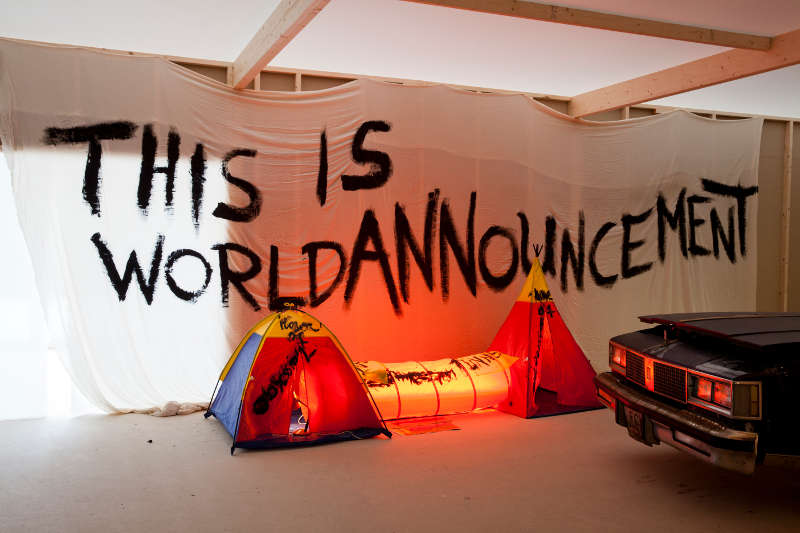 |
| Christoph Schlingensief, Animatograph – Iceland-Edition. (House of Parliament/House of Obsession) Destroy Thingvellir, 2005. Photo: Helene Toresdotter. |
“The Alien Within” concerns a complex dialogue around how Western society’s structure is influenced by fear as a normative factor. Emphasizing an unstable European political climate, it raises specific questions such as whether creatives are now expected to tackle sociopolitical issues directly or how fear and paranoia exist in growing multicultural sites, such as Malmö, in part due to fluctuating demographics.
The exhibition includes works such as Christoph Schlingensief’s Animatograph—Iceland-Edition. (House of Parliament/House of Obsession) Destroy Thingvellir, 2005, a multimedia installation that blurs the line between art and theater. Its kinetic antics interrogate the apparatus of performance in specific environs, as well as the politics of the bizarre: What gestures are deemed mainstream versus maverick? When does society allow room for an outlier element or movement, and when does it reabsorb such entities into muted invisibility?
This show, while dismantling traditional mediums and straightforward narratives, revisualizes Western civilization’s discontents but avoids the tendency to oversimplify. The Malmö- and Berlin-based theater group Institutet exemplifies this via a series of videos from 2014 shown at the opening titled “Monsters Arrive Because They Are Called For. It Was You Who Called!” and via additional performances in collaboration with the pop band LOVAC that highlight an intent to dismantle paradoxes of power, sexuality, and the nuclear family. For instance, one of the videos is a blur of men receiving fellatio, accompanied by an elusive voice-over, while another, Ladainha, 2006, ambivalently shows a man using a ventilation system to slowly inflate a blow-up doll. Speech and its persuasive applications in politics also prove to be a striking component of this exhibition, which weaves in opportunities for the public to be heard during workshops, lectures, and concerts. One is left wondering who or what will speak next—and from what direction.
To see the review in context, click here.








